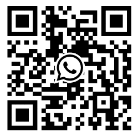LoRa is a radio technology based on the LoRaWAN protocol that is suitable for cities to smart cities in addition to 5G. In some applications, the LoRa network is even more appropriate than the often-mentioned new mobile radio standard.
Many aim to develop into smart cities. The idea of a "smart city" is not new. The purpose of implementing smart city technology is to improve the quality of life of residents, create efficiency, shorten the waiting time, meet service needs and utilize urban resources, so as to tax more effectively.
The Internet of Things (IoT) plays an important role in this process. It permeates almost every area of life, changing almost every business and every branch office. Given the possibilities of the next generation of 5G mobile communications, is this technology a natural solution to the existing smart city problem? But other technologies may be more meaningful for some applications of smart cities, such as reducing energy consumption through smart lighting, meters, etc. LoRa is one of them.
What is the LoRa network?
Simply put, it's a remote radio. LoRa technology for remote wireless (radio) data communication is realized by a semiconductor IC with extremely low power consumption. Depending on the functions and functions of such radio transmitters, the battery can power them for several years. This should be able to run for 10 to 20 years without battery replacement. This greatly reduces the maintenance efforts.
LoRa networks operate in an unlicensed spectrum as compared to 4G or 5G. This enables two-way communication without the regulatory and auction costs needed to build the network on a state-licensed spectrum. Specifically, LoRaWAN uses regional different frequency ranges in the ISM and SRD bands. In Europe, the ISM band region 1 ranges from 433.05MHz to 434.79MHz, and the SRD band in Europe ranges from 863 MHz to 870 MHz. In North America, on the other hand, data transmission is performed on the ISM band region 2 (902 MHz to 928 MHz).
Jointly develop an open, unified agreement designed to create added value and expand coverage.
Application of the LoRa network in cities
LoRa technology provides technological and economic advantages for smart city applications. LoRa and LoRaWAN provide an intelligent monitoring infrastructure. For densely populated metropolitan areas, LoRaWAN signals penetrate relatively deeply into urban areas. Smart city technology is changing the way that cities, authorities, and citizens interact.
The LoRa sensor and the gateway
With the LoRa network, sensors can be integrated into any street lighting system that controls lighting and collects usage data. LoRa technology collects data from all nearby street lights through the LoRa Alliance. The gateway then sends the information to a public or private cloud server, which analyzes the data, ultimately controls the lighting, and automatically generates warnings about lights out and other failures when necessary.
Users can even add wireless (OTA) updates to switch between public and private networks. The bidirectional communication of the LoRa technology makes this possible. LoRa technology has extremely extensive applications in smart cities and is not limited to lighting. The technology can be used in different ways:
· Parking: Smart parking lot monitoring shows city parking lots to reduce traffic congestion when drivers are looking for parking Spaces. Research shows that drivers spend 17 hours a year finding a parking space.
· Traffic flow: The helicopter used for traffic monitoring may one day be a thing of the past. Traffic congestion is a major challenge and problem faced by urban residents. Intelligent transportation systems that monitor vehicle and pedestrian traffic can better guide cars and pedestrians. This is done by using intelligent traffic lights that record traffic and coordinate the phase. In the future, intelligent transportation systems could even include communications between traffic light signals and vehicle sensors.
· Traffic light maintenance: Traffic light monitoring enables the city / municipal administration to respond quickly to burned lights, defective light poles (due to accidents), or faulty signal systems. This helps to ease traffic congestion, possible accidents and other dangerous situations.
· Predictive Maintenance: Smart building systems can provide data on the use of predictive maintenance systems to ensure that facilities are properly maintained. These systems can monitor vibrations and other physical conditions in buildings, bridges and historic sites so that management can take action before major repairs are required.
· Waste disposal: Waste collection is an important responsibility area of urban management. However, unnecessary resources are often wasted, such as half empty or almost no filled bins. Even if waste containers are overcrowded due to lack of tracking options. Smart waste management systems can help identify waste levels in containers to optimize waste collection routes, thereby increasing efficiency, cost, and cleanliness.
· Noise and air pollution: Noise and air pollution are becoming even bigger challenges as more people move to cities. Intelligent noise and air pollution monitoring can provide data to improve the well-being of citizens and show the link between systemic health problems.
· Combined with sensors that can provide remote areas (up to 50 kilometers in rural areas) or more than several kilometers in densely populated urban areas or indoor areas, LoRa's advantages are immediately apparent. Smart city technology can provide new solutions for smarter and more complete urban applications. Building a scalable, flexible and secure remote IOT network can reduce some infrastructure investment and reduce maintenance costs. The LoRa and LoRaWAN specifications are the foundation for successful smart city solutions.
Contact: Qui
Phone: 18146178586
Tel: 18146178586
Email: qui@zonewu.com
Add: 1501-3, Building F03, Phase III, Software Park, Jimei District, Xiamen City, Fujian Province, China
